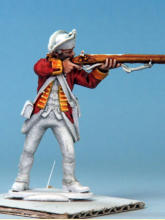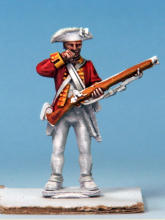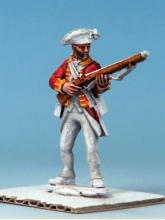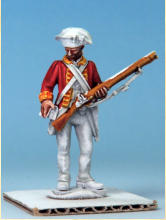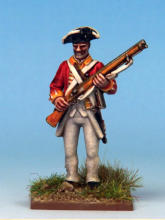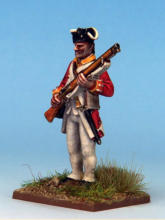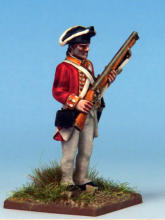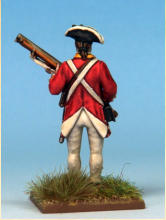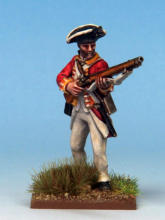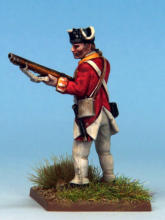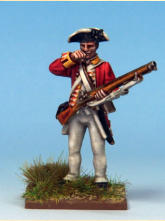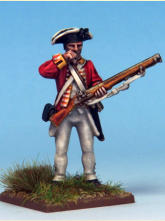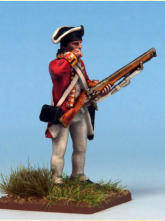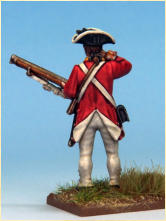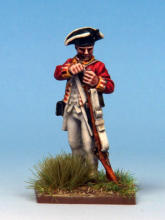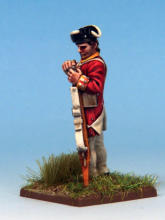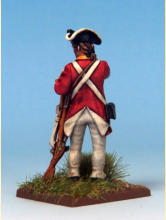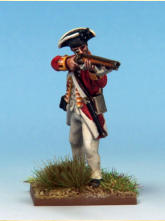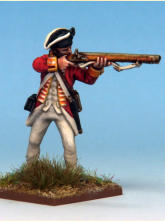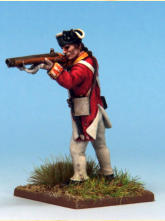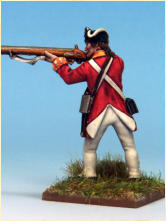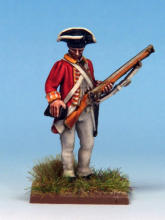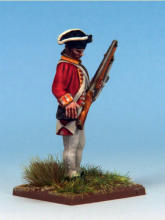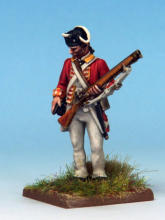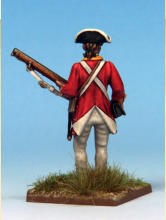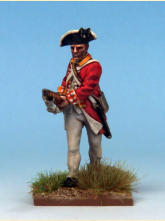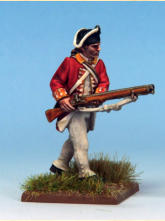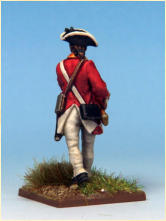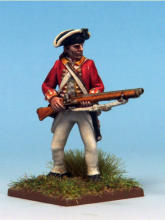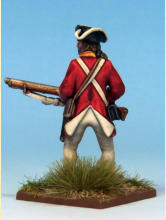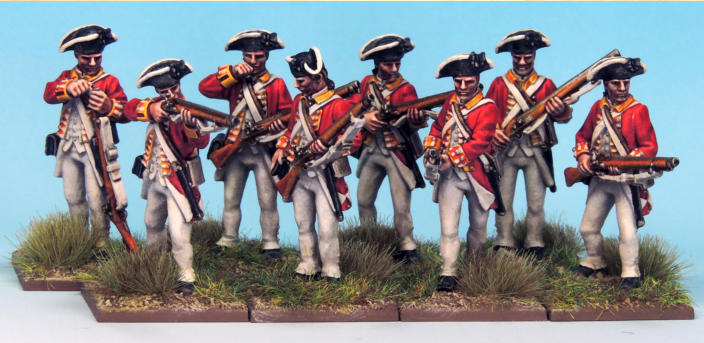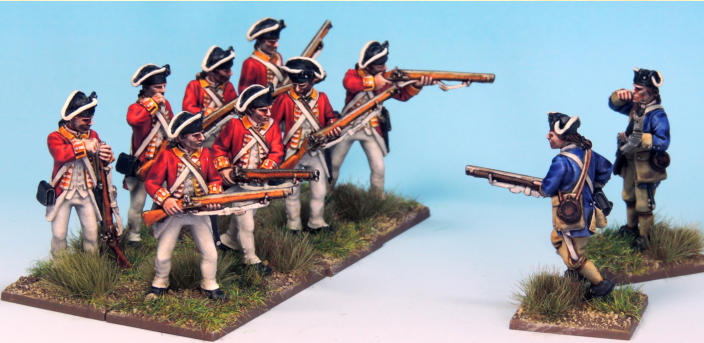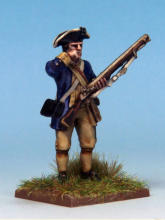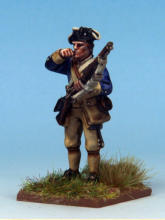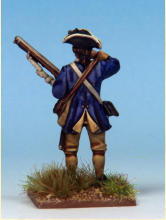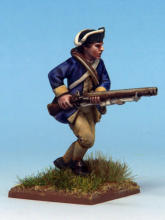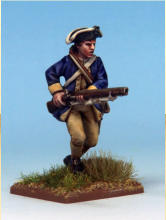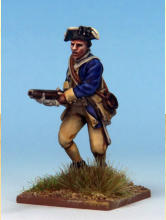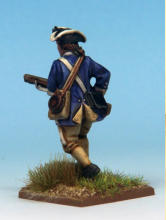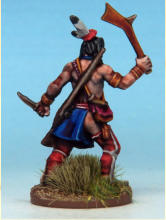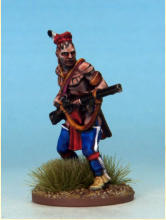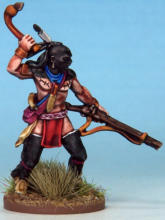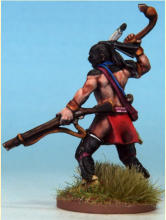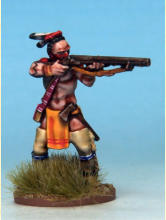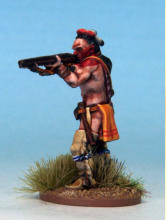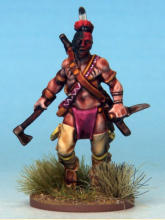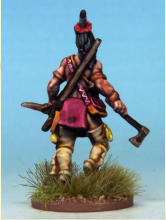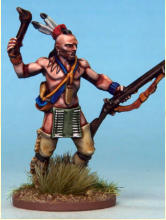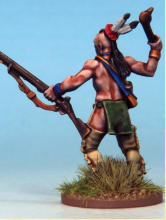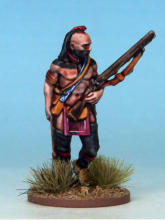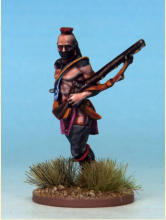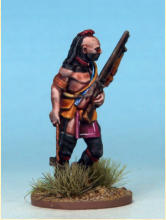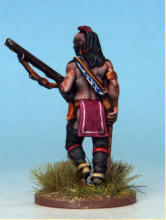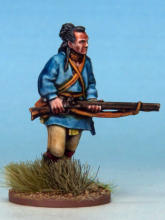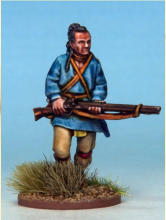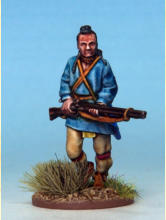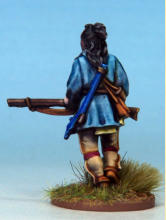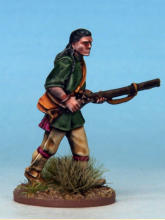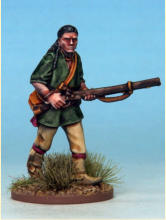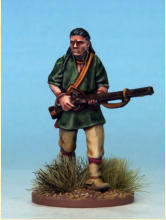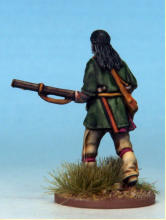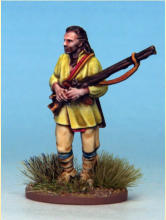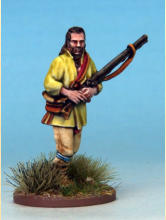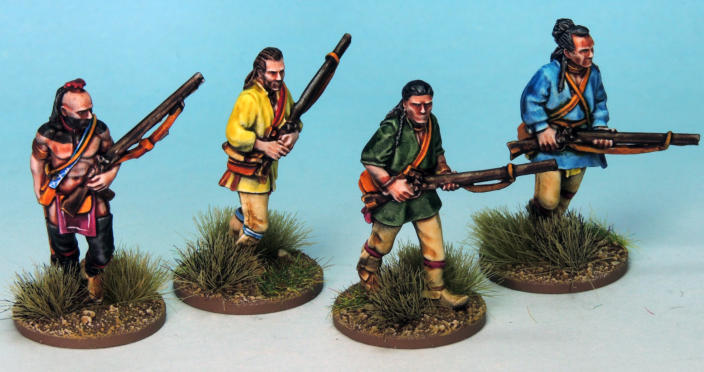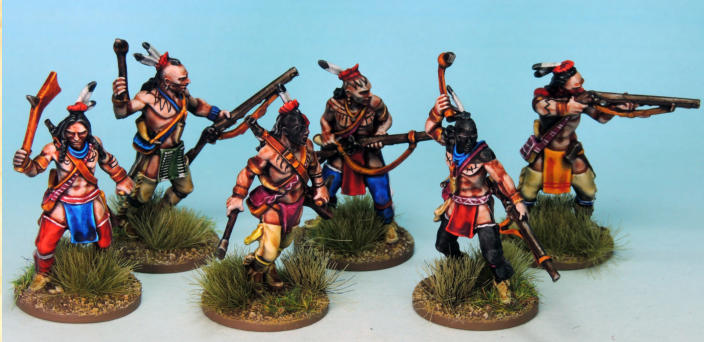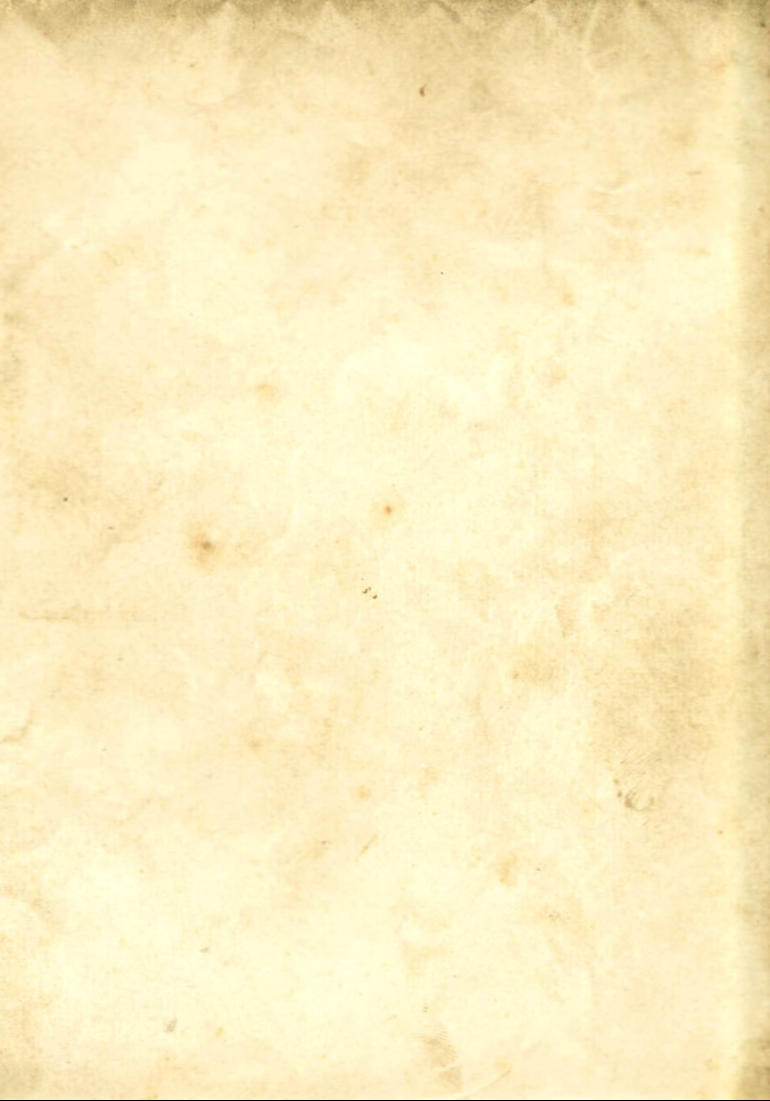
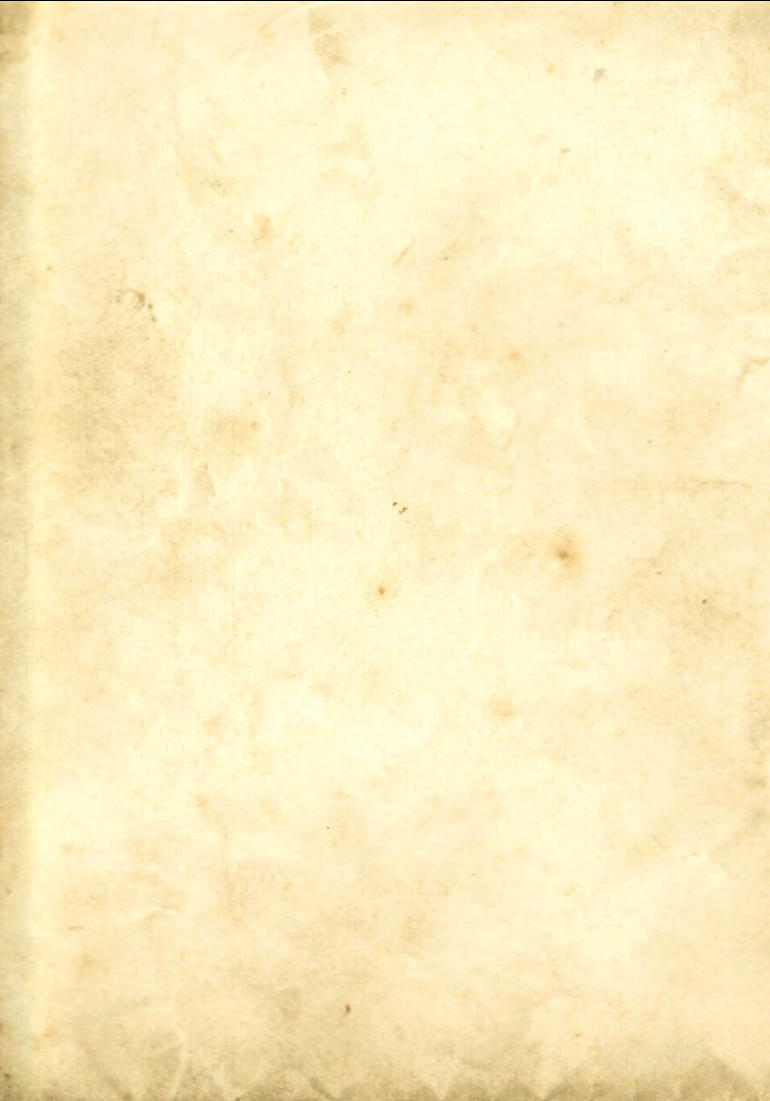

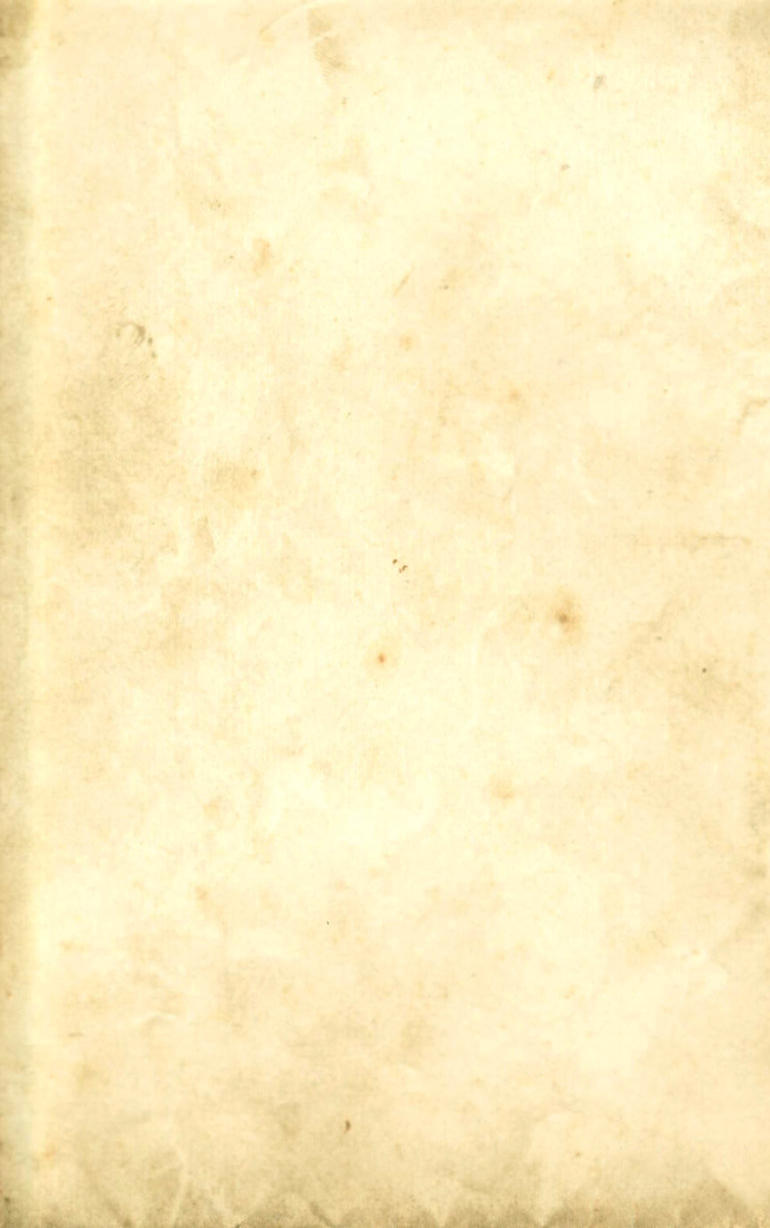

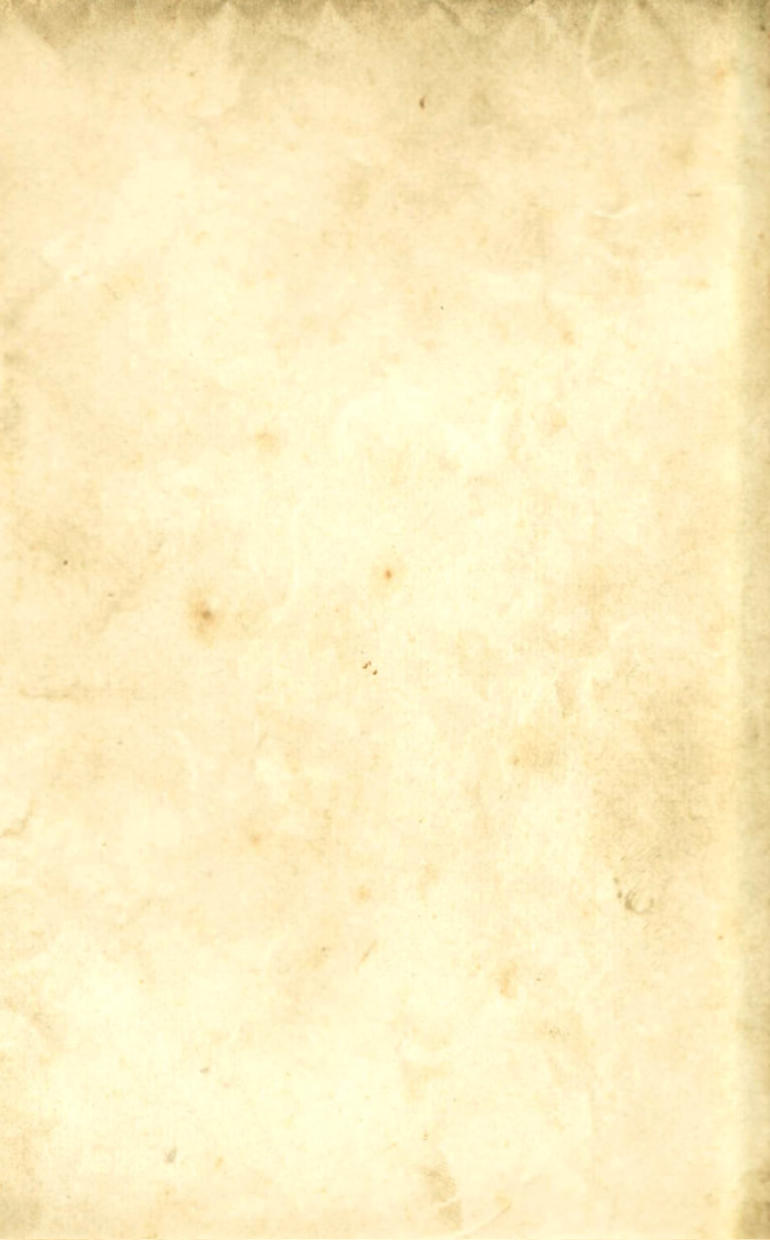
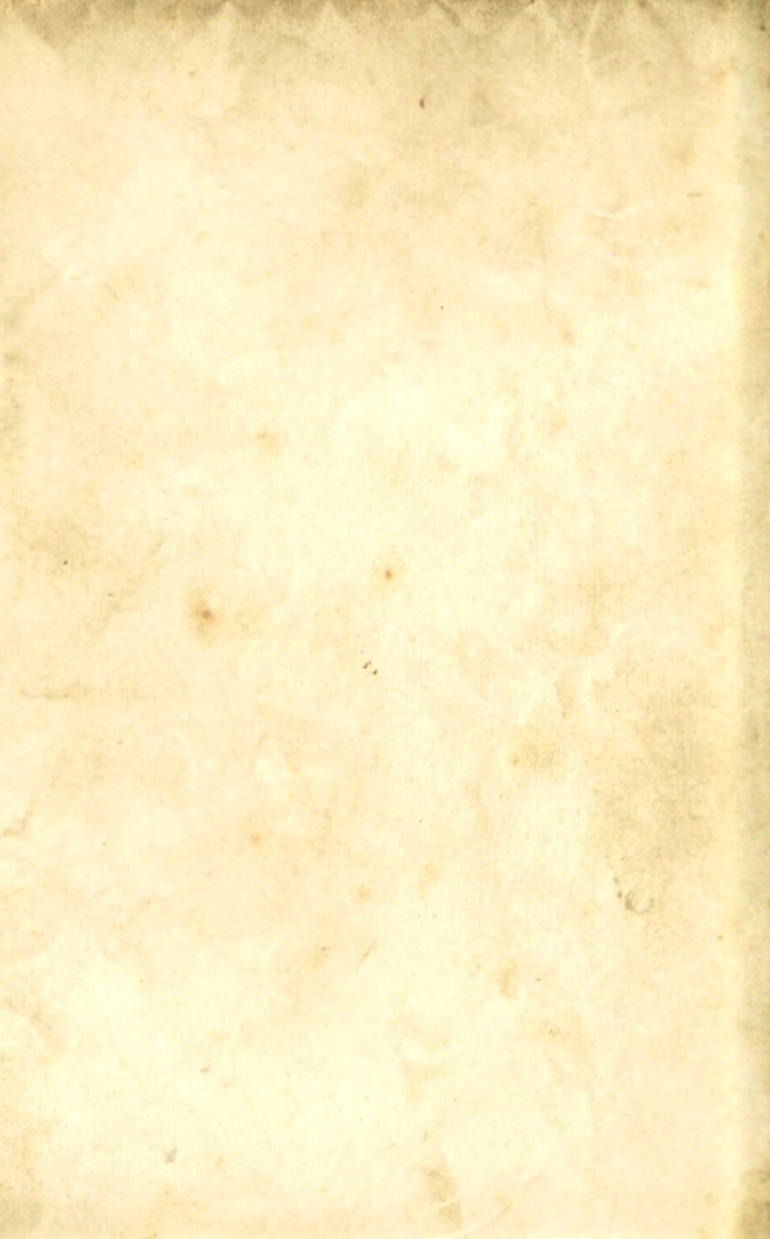
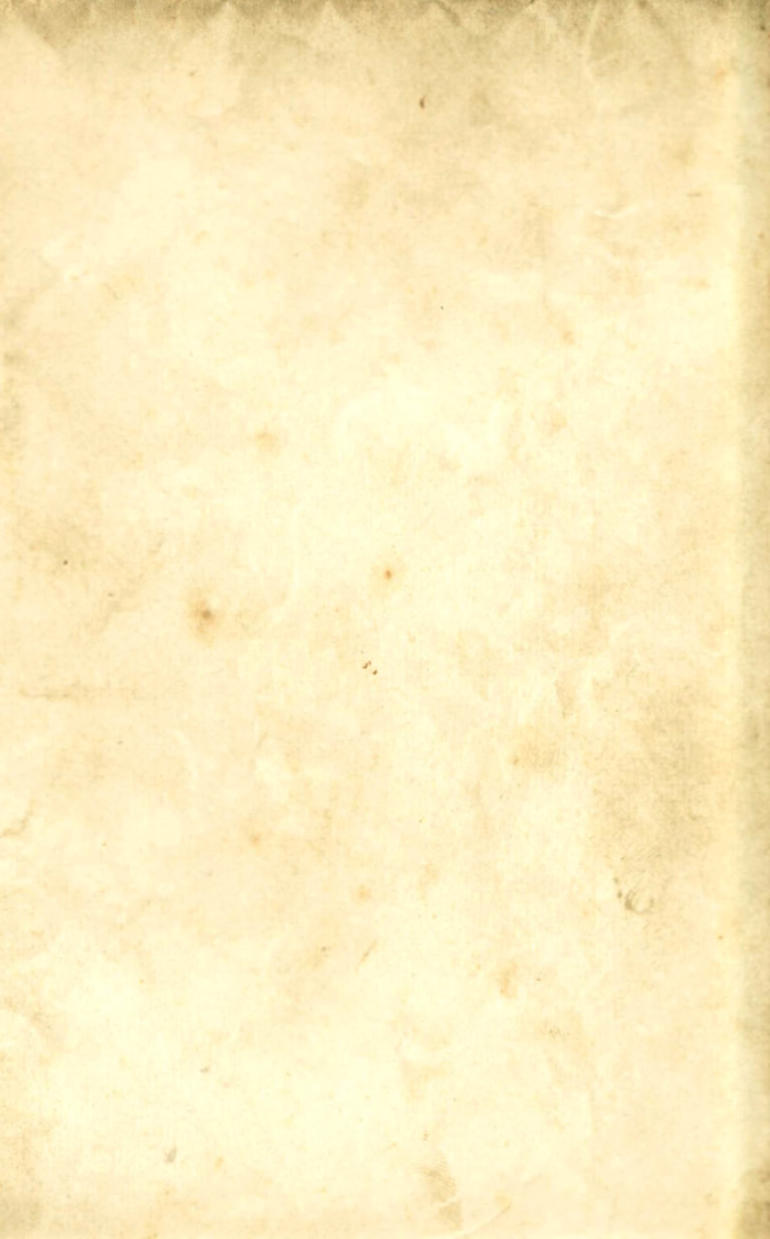
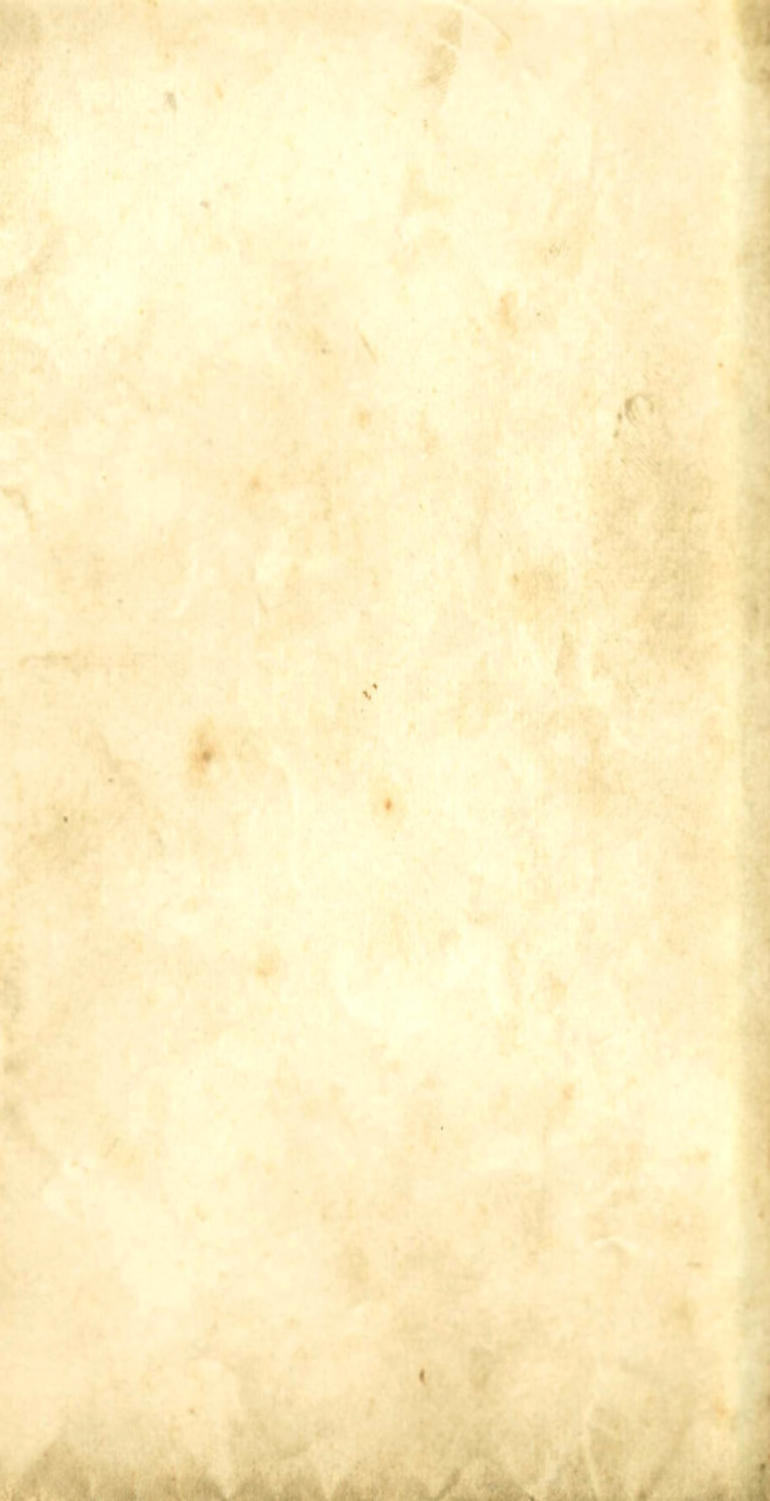



















WHY?
I have tried painting various things now with The Army Painter Speedpaints, from Broo to Wolves to Stargrave,
Painter Speedpaints, from Broo to Wolves to Stargrave, and I have to say I like ‘em. So for a change I thought I
and I have to say I like ‘em. So for a change I thought I would have a go at something more uniform, well
would have a go at something more uniform, well something wearing uniforms to be exact, something that
something wearing uniforms to be exact, something that has definite colours and that would have to be near
has definite colours and that would have to be near enough the right colours too. Now I’m not talking 1970’s
enough the right colours too. Now I’m not talking 1970’s Humbrol Authentic colours, but near enough to pass
Humbrol Authentic colours, but near enough to pass muster. I also wanted to see if I could use them in a fine
muster. I also wanted to see if I could use them in a fine precise enough way for 18th century British regular
precise enough way for 18th century British regular infantry, a way that might not be their raison d'etre I
infantry, a way that might not be their raison d'etre I should think. The British regular infantry in this case are
should think. The British regular infantry in this case are from North Star’s Muskets & Tomahawks American War of
from North Star’s Muskets & Tomahawks American War of Independence range.
Independence range. UNPAINTED
For those of you that read my first go at the Speedpaints
UNPAINTED
For those of you that read my first go at the Speedpaints will know I have more than a few undercoated and or
will know I have more than a few undercoated and or wholly unpainted figures around the place and still more
wholly unpainted figures around the place and still more from my day job at North Star that I prime up grey for my
from my day job at North Star that I prime up grey for my photography. But Speedpaints seem to be denting the
photography. But Speedpaints seem to be denting the ever increasing pile of lead.
ever increasing pile of lead. NOT ODD
I’m a convert to the Speedpaints and that’s not odd, given
NOT ODD
I’m a convert to the Speedpaints and that’s not odd, given what I do for a living, there are so many models to paint
what I do for a living, there are so many models to paint and game with and, well to be blunt, only one lifetime in
and game with and, well to be blunt, only one lifetime in which to do it. I am no stranger to fast painting (in spite of
which to do it. I am no stranger to fast painting (in spite of my reputation), I’ve been doing it for years. In fact I have
my reputation), I’ve been doing it for years. In fact I have completed a whole series of articles on fast painting
completed a whole series of articles on fast painting armies for Oathmark using the previous iteration of The
armies for Oathmark using the previous iteration of The Army Painter fast painting method using their Quickshade
Army Painter fast painting method using their Quickshade washes and Quickshade Varnish, CLICK HERE.
washes and Quickshade Varnish, CLICK HERE. GRAIL SHAPED
They are still not the Holy Grail but they may be a grail
GRAIL SHAPED
They are still not the Holy Grail but they may be a grail shaped object; but they still won’t do it all for you. They do
shaped object; but they still won’t do it all for you. They do require thought and handling in the correct way to get the
require thought and handling in the correct way to get the 
 Painter Speedpaints, from Broo to Wolves to Stargrave,
Painter Speedpaints, from Broo to Wolves to Stargrave, and I have to say I like ‘em. So for a change I thought I
and I have to say I like ‘em. So for a change I thought I would have a go at something more uniform, well
would have a go at something more uniform, well something wearing uniforms to be exact, something that
something wearing uniforms to be exact, something that has definite colours and that would have to be near
has definite colours and that would have to be near enough the right colours too. Now I’m not talking 1970’s
enough the right colours too. Now I’m not talking 1970’s Humbrol Authentic colours, but near enough to pass
Humbrol Authentic colours, but near enough to pass muster. I also wanted to see if I could use them in a fine
muster. I also wanted to see if I could use them in a fine precise enough way for 18th century British regular
precise enough way for 18th century British regular infantry, a way that might not be their raison d'etre I
infantry, a way that might not be their raison d'etre I should think. The British regular infantry in this case are
should think. The British regular infantry in this case are from North Star’s Muskets & Tomahawks American War of
from North Star’s Muskets & Tomahawks American War of Independence range.
Independence range. UNPAINTED
For those of you that read my first go at the Speedpaints
UNPAINTED
For those of you that read my first go at the Speedpaints will know I have more than a few undercoated and or
will know I have more than a few undercoated and or wholly unpainted figures around the place and still more
wholly unpainted figures around the place and still more from my day job at North Star that I prime up grey for my
from my day job at North Star that I prime up grey for my photography. But Speedpaints seem to be denting the
photography. But Speedpaints seem to be denting the ever increasing pile of lead.
ever increasing pile of lead. NOT ODD
I’m a convert to the Speedpaints and that’s not odd, given
NOT ODD
I’m a convert to the Speedpaints and that’s not odd, given what I do for a living, there are so many models to paint
what I do for a living, there are so many models to paint and game with and, well to be blunt, only one lifetime in
and game with and, well to be blunt, only one lifetime in which to do it. I am no stranger to fast painting (in spite of
which to do it. I am no stranger to fast painting (in spite of my reputation), I’ve been doing it for years. In fact I have
my reputation), I’ve been doing it for years. In fact I have completed a whole series of articles on fast painting
completed a whole series of articles on fast painting armies for Oathmark using the previous iteration of The
armies for Oathmark using the previous iteration of The Army Painter fast painting method using their Quickshade
Army Painter fast painting method using their Quickshade washes and Quickshade Varnish, CLICK HERE.
washes and Quickshade Varnish, CLICK HERE. GRAIL SHAPED
They are still not the Holy Grail but they may be a grail
GRAIL SHAPED
They are still not the Holy Grail but they may be a grail shaped object; but they still won’t do it all for you. They do
shaped object; but they still won’t do it all for you. They do require thought and handling in the correct way to get the
require thought and handling in the correct way to get the 
best out of them, and in some ways require more thought than normal paints, especially in preparation and planning
than normal paints, especially in preparation and planning as I will explain.
UNIT
So I set out to complete this whole unit in a shorter space
as I will explain.
UNIT
So I set out to complete this whole unit in a shorter space of time as I could. I didn’t have time to do it all in one
of time as I could. I didn’t have time to do it all in one sitting as I was fitting it in around my proper job and other
sitting as I was fitting it in around my proper job and other painting commitments. Luckily most of the cleaning up
painting commitments. Luckily most of the cleaning up was done and they were primed grey, as these were
was done and they were primed grey, as these were models I had already photographed for North Star web
models I had already photographed for North Star web images. As it turned out I reckon the painting took about
images. As it turned out I reckon the painting took about half an hour per model when doing a whole unit, which for
half an hour per model when doing a whole unit, which for me ranks as super speedy.
TIME
As I said before these paints aren’t any help speeding up
me ranks as super speedy.
TIME
As I said before these paints aren’t any help speeding up the preparation and finishing time of the models. You will
the preparation and finishing time of the models. You will still need to spend as much time cleaning up and/or
still need to spend as much time cleaning up and/or assembling your models and the same sort of time
assembling your models and the same sort of time varnishing and basing them up, although Speedpaint
varnishing and basing them up, although Speedpaint could assist in the basing, but not this time. Some people
could assist in the basing, but not this time. Some people just love the prep and finishing and hate painting,
just love the prep and finishing and hate painting, Speedpaints are ideal for them.
Speedpaints are ideal for them. FROM THE TOP
As the models were already primed grey, I went for a
FROM THE TOP
As the models were already primed grey, I went for a white zenithal undercoat applied from above over the grey.
white zenithal undercoat applied from above over the grey. If you search on YouTube for zenithal undercoat you will
If you search on YouTube for zenithal undercoat you will see what it is. I applied it with my very elderly airbrush, but
see what it is. I applied it with my very elderly airbrush, but a spray can of white primer could do just as well, if you are
a spray can of white primer could do just as well, if you are using Army Painter cans be aware they put out a lot of
using Army Painter cans be aware they put out a lot of paint. The idea is not to obliterate all the darker primer but
paint. The idea is not to obliterate all the darker primer but leaving it underneath, creating a shadow effect and thus
leaving it underneath, creating a shadow effect and thus some shading for free, so a light touch is needed. You can
some shading for free, so a light touch is needed. You can also spray apply the zenithal white over a black undercoat
also spray apply the zenithal white over a black undercoat too. Or you can dry-brush white on, know as slap chop if
too. Or you can dry-brush white on, know as slap chop if you want to look it up. When using spray cans always test
you want to look it up. When using spray cans always test the spray out before you commit it to the figures, it can go
the spray out before you commit it to the figures, it can go gritty if not shaken up properly, just saying.
gritty if not shaken up properly, just saying.
 than normal paints, especially in preparation and planning
than normal paints, especially in preparation and planning as I will explain.
UNIT
So I set out to complete this whole unit in a shorter space
as I will explain.
UNIT
So I set out to complete this whole unit in a shorter space of time as I could. I didn’t have time to do it all in one
of time as I could. I didn’t have time to do it all in one sitting as I was fitting it in around my proper job and other
sitting as I was fitting it in around my proper job and other painting commitments. Luckily most of the cleaning up
painting commitments. Luckily most of the cleaning up was done and they were primed grey, as these were
was done and they were primed grey, as these were models I had already photographed for North Star web
models I had already photographed for North Star web images. As it turned out I reckon the painting took about
images. As it turned out I reckon the painting took about half an hour per model when doing a whole unit, which for
half an hour per model when doing a whole unit, which for me ranks as super speedy.
TIME
As I said before these paints aren’t any help speeding up
me ranks as super speedy.
TIME
As I said before these paints aren’t any help speeding up the preparation and finishing time of the models. You will
the preparation and finishing time of the models. You will still need to spend as much time cleaning up and/or
still need to spend as much time cleaning up and/or assembling your models and the same sort of time
assembling your models and the same sort of time varnishing and basing them up, although Speedpaint
varnishing and basing them up, although Speedpaint could assist in the basing, but not this time. Some people
could assist in the basing, but not this time. Some people just love the prep and finishing and hate painting,
just love the prep and finishing and hate painting, Speedpaints are ideal for them.
Speedpaints are ideal for them. FROM THE TOP
As the models were already primed grey, I went for a
FROM THE TOP
As the models were already primed grey, I went for a white zenithal undercoat applied from above over the grey.
white zenithal undercoat applied from above over the grey. If you search on YouTube for zenithal undercoat you will
If you search on YouTube for zenithal undercoat you will see what it is. I applied it with my very elderly airbrush, but
see what it is. I applied it with my very elderly airbrush, but a spray can of white primer could do just as well, if you are
a spray can of white primer could do just as well, if you are using Army Painter cans be aware they put out a lot of
using Army Painter cans be aware they put out a lot of paint. The idea is not to obliterate all the darker primer but
paint. The idea is not to obliterate all the darker primer but leaving it underneath, creating a shadow effect and thus
leaving it underneath, creating a shadow effect and thus some shading for free, so a light touch is needed. You can
some shading for free, so a light touch is needed. You can also spray apply the zenithal white over a black undercoat
also spray apply the zenithal white over a black undercoat too. Or you can dry-brush white on, know as slap chop if
too. Or you can dry-brush white on, know as slap chop if you want to look it up. When using spray cans always test
you want to look it up. When using spray cans always test the spray out before you commit it to the figures, it can go
the spray out before you commit it to the figures, it can go gritty if not shaken up properly, just saying.
gritty if not shaken up properly, just saying.
Above. The finished unit of speed painted Muskets & Tomahawks AWI British Regular Infantry.
PLANNING
Speedpaints are semi-transparent, they are much more akin to a wash or a stain, similar to the old watercolour
akin to a wash or a stain, similar to the old watercolour blocks, but have a more sustained pigment and an
blocks, but have a more sustained pigment and an interesting way flowing and don’t seem to leave
interesting way flowing and don’t seem to leave tidemarks. The paint properties require some planning as
tidemarks. The paint properties require some planning as you are less able to hide errors with subsequent layers or
you are less able to hide errors with subsequent layers or colours as you could with conventional painting. With
colours as you could with conventional painting. With them I always plan to use lighter colours first and then go
them I always plan to use lighter colours first and then go darker in the hope to minimize any mistakes. Also the
darker in the hope to minimize any mistakes. Also the peculiar properties of the Speedpaints mean that if you
peculiar properties of the Speedpaints mean that if you have left any mould line on the models they will
have left any mould line on the models they will accentuate them, so be prepared to clean up the models
accentuate them, so be prepared to clean up the models diligently.
PAINTS
These Mk1 paints also have another unusual property
diligently.
PAINTS
These Mk1 paints also have another unusual property which is, when you paint over the Speedpaints with
which is, when you paint over the Speedpaints with normal Army Painter War Paint, the Speedpaint has a
normal Army Painter War Paint, the Speedpaint has a tendency to bleed into the normal paint as stain it slightly,
tendency to bleed into the normal paint as stain it slightly, so if you are trying to correct an error by applying more
so if you are trying to correct an error by applying more white undercoat, expect this phenomenon. These models
white undercoat, expect this phenomenon. These models are mostly done in the Mk1, using only a few colours of
are mostly done in the Mk1, using only a few colours of the new Mk2, as I didn’t have some specific colours I
the new Mk2, as I didn’t have some specific colours I needed in the Mk1 (and not wanting to waste the paint I
needed in the Mk1 (and not wanting to waste the paint I am trying to use up all my Mk1s before using the Mk2, but
I only had the small set of the Mk1). The Mk2 versions
am trying to use up all my Mk1s before using the Mk2, but
I only had the small set of the Mk1). The Mk2 versions seem to have cured this phenomenon, so hooray,
seem to have cured this phenomenon, so hooray, although it didn’t overly bother me, I have noted the Mk2
although it didn’t overly bother me, I have noted the Mk2 as I use them.
BRUSHES
The watery nature of these paints means that they will run
as I use them.
BRUSHES
The watery nature of these paints means that they will run up the bristles of the brush into the metal ferrule and are
up the bristles of the brush into the metal ferrule and are the devils own job to completely clean out, so don’t use
the devils own job to completely clean out, so don’t use 
 akin to a wash or a stain, similar to the old watercolour
akin to a wash or a stain, similar to the old watercolour blocks, but have a more sustained pigment and an
blocks, but have a more sustained pigment and an interesting way flowing and don’t seem to leave
interesting way flowing and don’t seem to leave tidemarks. The paint properties require some planning as
tidemarks. The paint properties require some planning as you are less able to hide errors with subsequent layers or
you are less able to hide errors with subsequent layers or colours as you could with conventional painting. With
colours as you could with conventional painting. With them I always plan to use lighter colours first and then go
them I always plan to use lighter colours first and then go darker in the hope to minimize any mistakes. Also the
darker in the hope to minimize any mistakes. Also the peculiar properties of the Speedpaints mean that if you
peculiar properties of the Speedpaints mean that if you have left any mould line on the models they will
have left any mould line on the models they will accentuate them, so be prepared to clean up the models
accentuate them, so be prepared to clean up the models diligently.
PAINTS
These Mk1 paints also have another unusual property
diligently.
PAINTS
These Mk1 paints also have another unusual property which is, when you paint over the Speedpaints with
which is, when you paint over the Speedpaints with normal Army Painter War Paint, the Speedpaint has a
normal Army Painter War Paint, the Speedpaint has a tendency to bleed into the normal paint as stain it slightly,
tendency to bleed into the normal paint as stain it slightly, so if you are trying to correct an error by applying more
so if you are trying to correct an error by applying more white undercoat, expect this phenomenon. These models
white undercoat, expect this phenomenon. These models are mostly done in the Mk1, using only a few colours of
are mostly done in the Mk1, using only a few colours of the new Mk2, as I didn’t have some specific colours I
the new Mk2, as I didn’t have some specific colours I needed in the Mk1 (and not wanting to waste the paint I
needed in the Mk1 (and not wanting to waste the paint I am trying to use up all my Mk1s before using the Mk2, but
I only had the small set of the Mk1). The Mk2 versions
am trying to use up all my Mk1s before using the Mk2, but
I only had the small set of the Mk1). The Mk2 versions seem to have cured this phenomenon, so hooray,
seem to have cured this phenomenon, so hooray, although it didn’t overly bother me, I have noted the Mk2
although it didn’t overly bother me, I have noted the Mk2 as I use them.
BRUSHES
The watery nature of these paints means that they will run
as I use them.
BRUSHES
The watery nature of these paints means that they will run up the bristles of the brush into the metal ferrule and are
up the bristles of the brush into the metal ferrule and are the devils own job to completely clean out, so don’t use
the devils own job to completely clean out, so don’t use 
Above. As the models were already primed grey, I went for a white zenithal undercoat applied from above over the grey. If
you search on YouTube for zenithal undercoat you will see what it is.
your best finest brushes. I have a decent stock of brushes that are no longer any good for frontline service but are
that are no longer any good for frontline service but are ideal for Speedpaints duty till they meet there end.
ideal for Speedpaints duty till they meet there end. SHAKE
Do shake the bottles up well; very well, this can make a
SHAKE
Do shake the bottles up well; very well, this can make a real difference to how the Speedpaint goes on. Each
real difference to how the Speedpaint goes on. Each bottle has no less than 2 ball bearings in them to ensure
bottle has no less than 2 ball bearings in them to ensure they mix up well when you shake them, so do that.
APPLICATION
The secret is to be controlled with them, there is a
they mix up well when you shake them, so do that.
APPLICATION
The secret is to be controlled with them, there is a tendency because of the speed label to slap them on any
tendency because of the speed label to slap them on any old how, and this will not yield the most satisfactory
old how, and this will not yield the most satisfactory results. Don’t overload your brush, the Speedpaints will
results. Don’t overload your brush, the Speedpaints will flow. Be careful and apply them only to the areas needed,
flow. Be careful and apply them only to the areas needed, avoiding slipping into other areas if you can, as you will
avoiding slipping into other areas if you can, as you will see I slipped over a bit but I was thinking they are mostly
see I slipped over a bit but I was thinking they are mostly going to be darker areas so I could get away with it. For
going to be darker areas so I could get away with it. For some fine work like the brown canteen strap for example I
some fine work like the brown canteen strap for example I used a very fine, if a bit worn, brush that I used to use for
used a very fine, if a bit worn, brush that I used to use for faces.
SPEEDPAINTS
I started with flesh, as that’s what I usually do when using
faces.
SPEEDPAINTS
I started with flesh, as that’s what I usually do when using normal paints. Also I chose the flesh as it seemed to be
normal paints. Also I chose the flesh as it seemed to be amongst the lighter colours. It is really worth planning the
amongst the lighter colours. It is really worth planning the order of colours you are going to use from light to dark. I
order of colours you are going to use from light to dark. I didn’t use the free (and very nice) brush that is included in
didn’t use the free (and very nice) brush that is included in the sets, as it was bit too large for my taste, I used a
the sets, as it was bit too large for my taste, I used a smaller, old and a bit knackered Army Painter brushes,
smaller, old and a bit knackered Army Painter brushes, already well broken in from other painting.
already well broken in from other painting.  FLESH, Crusader Skin.
BEARD, Runic Grey.
FLESH, Crusader Skin.
BEARD, Runic Grey.
 that are no longer any good for frontline service but are
that are no longer any good for frontline service but are ideal for Speedpaints duty till they meet there end.
ideal for Speedpaints duty till they meet there end. SHAKE
Do shake the bottles up well; very well, this can make a
SHAKE
Do shake the bottles up well; very well, this can make a real difference to how the Speedpaint goes on. Each
real difference to how the Speedpaint goes on. Each bottle has no less than 2 ball bearings in them to ensure
bottle has no less than 2 ball bearings in them to ensure they mix up well when you shake them, so do that.
APPLICATION
The secret is to be controlled with them, there is a
they mix up well when you shake them, so do that.
APPLICATION
The secret is to be controlled with them, there is a tendency because of the speed label to slap them on any
tendency because of the speed label to slap them on any old how, and this will not yield the most satisfactory
old how, and this will not yield the most satisfactory results. Don’t overload your brush, the Speedpaints will
results. Don’t overload your brush, the Speedpaints will flow. Be careful and apply them only to the areas needed,
flow. Be careful and apply them only to the areas needed, avoiding slipping into other areas if you can, as you will
avoiding slipping into other areas if you can, as you will see I slipped over a bit but I was thinking they are mostly
see I slipped over a bit but I was thinking they are mostly going to be darker areas so I could get away with it. For
going to be darker areas so I could get away with it. For some fine work like the brown canteen strap for example I
some fine work like the brown canteen strap for example I used a very fine, if a bit worn, brush that I used to use for
used a very fine, if a bit worn, brush that I used to use for faces.
SPEEDPAINTS
I started with flesh, as that’s what I usually do when using
faces.
SPEEDPAINTS
I started with flesh, as that’s what I usually do when using normal paints. Also I chose the flesh as it seemed to be
normal paints. Also I chose the flesh as it seemed to be amongst the lighter colours. It is really worth planning the
amongst the lighter colours. It is really worth planning the order of colours you are going to use from light to dark. I
order of colours you are going to use from light to dark. I didn’t use the free (and very nice) brush that is included in
didn’t use the free (and very nice) brush that is included in the sets, as it was bit too large for my taste, I used a
the sets, as it was bit too large for my taste, I used a smaller, old and a bit knackered Army Painter brushes,
smaller, old and a bit knackered Army Painter brushes, already well broken in from other painting.
already well broken in from other painting.  FLESH, Crusader Skin.
BEARD, Runic Grey.
FLESH, Crusader Skin.
BEARD, Runic Grey.
TROUSERS, BELTS,
MUSKET SLING & HAT
LACE, Holy White.
HOLY
The Holy White Speedpaint was thinned with the thinner
was thinned with the thinner supplied, and then the
supplied, and then the judicial application of the
judicial application of the painters thumb was be
painters thumb was be needed to get a whiter than
needed to get a whiter than white finish.
white finish.
 was thinned with the thinner
was thinned with the thinner supplied, and then the
supplied, and then the judicial application of the
judicial application of the painters thumb was be
painters thumb was be needed to get a whiter than
needed to get a whiter than white finish.
white finish.
THE REST
TRICORN HAT, SHOES, BAYONET SCABBARD,
CARTRIDGE BOX, HAIR BOW, Grim Black.
CANTEEN STRAP, Warrior Skin (2nd edition).
HAIR, Dark Wood.
GUN BARREL, CANTEEN, BAYONET, BUTTONS, Not
Speedpaints, normal Army Painter Warpaints, Gun
Metal, then a wash of Mid Brown and then a wash of
Strong Tone.
TIDY
I used some Humbrol white enamel paint to repaint and thus tidy some of the areas where I had inadvertently
thus tidy some of the areas where I had inadvertently gone over with the Speedpaint like the belts and turn-
gone over with the Speedpaint like the belts and turn-
 thus tidy some of the areas where I had inadvertently
thus tidy some of the areas where I had inadvertently gone over with the Speedpaint like the belts and turn-
gone over with the Speedpaint like the belts and turn-
backs, and it seems to work fine and more resistant to the Speedpaint bleeding through.
Speedpaint bleeding through. BASING
Normal Army Painter Warpaints again, to match existing
BASING
Normal Army Painter Warpaints again, to match existing figures bases. Leather Brown all over the basing
figures bases. Leather Brown all over the basing materials, then dry-brushed with Desert Yellow then very
materials, then dry-brushed with Desert Yellow then very lightly with Skeleton Bone, you can see much more
lightly with Skeleton Bone, you can see much more details about basing in my many other painting article in
details about basing in my many other painting article in the magazine.
FINISHED
Before basing they were finished off with a coat of spray
the magazine.
FINISHED
Before basing they were finished off with a coat of spray Anti Shine Matt Varnish. The Anti Shine Matt is a good
Anti Shine Matt Varnish. The Anti Shine Matt is a good choice to use with the Speedpaints as it’s not a dead flat
choice to use with the Speedpaints as it’s not a dead flat finish it confers a subtle low sheen with is quite helpful
finish it confers a subtle low sheen with is quite helpful especially on the darker colours.
especially on the darker colours. 
 Speedpaint bleeding through.
Speedpaint bleeding through. BASING
Normal Army Painter Warpaints again, to match existing
BASING
Normal Army Painter Warpaints again, to match existing figures bases. Leather Brown all over the basing
figures bases. Leather Brown all over the basing materials, then dry-brushed with Desert Yellow then very
materials, then dry-brushed with Desert Yellow then very lightly with Skeleton Bone, you can see much more
lightly with Skeleton Bone, you can see much more details about basing in my many other painting article in
details about basing in my many other painting article in the magazine.
FINISHED
Before basing they were finished off with a coat of spray
the magazine.
FINISHED
Before basing they were finished off with a coat of spray Anti Shine Matt Varnish. The Anti Shine Matt is a good
Anti Shine Matt Varnish. The Anti Shine Matt is a good choice to use with the Speedpaints as it’s not a dead flat
choice to use with the Speedpaints as it’s not a dead flat finish it confers a subtle low sheen with is quite helpful
finish it confers a subtle low sheen with is quite helpful especially on the darker colours.
especially on the darker colours. 
MORE SPEED PAINTING
I had a few American Continental infantry lying around so I did them too, and I also had previously painted the
so I did them too, and I also had previously painted the Hurons and Mohicans from the range. See what you
Hurons and Mohicans from the range. See what you think.
YANKS
FLESH, Crusader Skin. JACKET, Beowulf Blue.
think.
YANKS
FLESH, Crusader Skin. JACKET, Beowulf Blue.
 so I did them too, and I also had previously painted the
so I did them too, and I also had previously painted the Hurons and Mohicans from the range. See what you
Hurons and Mohicans from the range. See what you think.
YANKS
FLESH, Crusader Skin. JACKET, Beowulf Blue.
think.
YANKS
FLESH, Crusader Skin. JACKET, Beowulf Blue.
CARTRIDGE BOX BELT, MUSKET SLING & HAT
LACE, Holy White.
TURN-BACKS, BRITCHES, STOCKINGS, WAISTCOAT,
BREAD-BAG, Pallid Bone.
MUSKET STOCK, WATER BOTTLE, HAIR, Dark Wood.
CANTEEN STRAP, Warrior Skin (2nd edition).
TRICORN HAT, SHOES, BAYONET SCABBARD,
CARTRIDGE BOX, HAIR BOW, Grim Black.
HURONS
INDIAN CHARACTERS


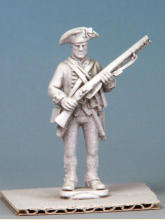
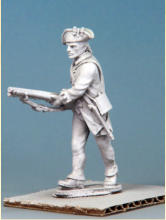

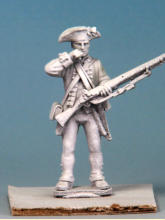
Above. The Crusader Skin goes all over the flesh areas, with the Runic Grey just on the beard.
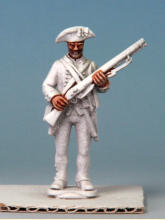
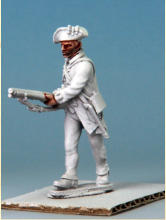
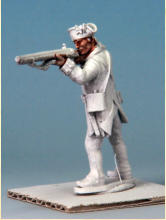
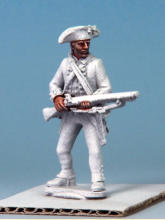
JACKET, Slaughter Red (2nd edition).
CUFFS & TURN BACKS, Zealot yellow.
MUSKET STOCK, Hardened Leather.
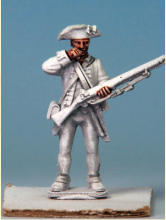
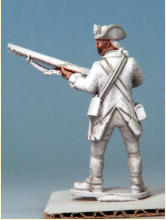
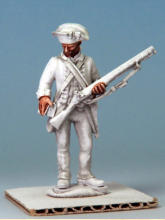
Above. The Holy White Speedpaint was thinned with the thinner supplied.
Above. JACKET, Slaughter Red. CUFFS & TURN BACKS, Zealot yellow. MUSKET STOCK, Hardened Leather.
